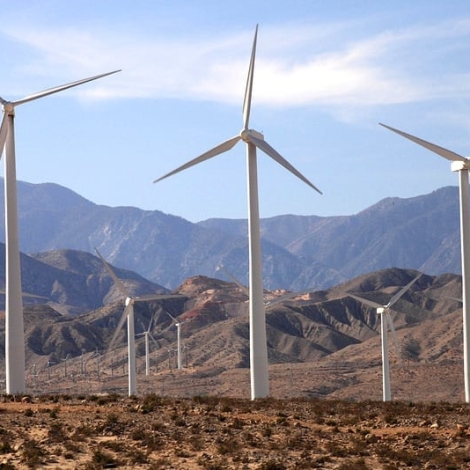Still, dead air and clouds hobble wind and solar energy generators. What makes those facts of nature particularly frustrating is their unpredictability. With a deeper understanding of wind, sunshine and clouds, companies can place their renewable power generators efficiently. And after the hardware is placed, better foresight of the weather doldrums could prompt efficient responses. More predictable weather could reduce harmful gas emissions worldwide, and even cut down on the power outages that plague many communities in developing countries.
To take some of the guesswork out of power planning, IBM recently announced the release of power and weather modeling technologies. The Hybrid Renewable Energy Forecasting (HyRef) package uses weather modeling and cloud-imaging software, sky-facing cameras to track cloud movements, and sensors on wind turbines that monitor wind speed, temperature and direction.
Combining HyRef with IBM’s weather analytics programs can give local weather forecasts within a wind farm in 15-minute increments and as far as one month into the future.
The new tools can help countries worldwide, including developing regions, meet emissions goals.
“Utilities around the world are employing a host of strategies to integrate new renewable energy resources into their operating systems in order to reach a baseline goal of a 25 percent renewable energy mix globally by 2025,” Vice Admiral Dennis McGinn, CEO of the American Council On Renewable Energy, said in a statement. “The weather modeling and forecasting data generated from HyRef will significantly improve this process and in turn, put us one step closer to maximizing the full potential of renewable resources.”
These tools may also have a place in low-resource settings, Rolf Gibbels, Global Power Generation Solutions Leader at IBM Energy and Utilities, told E4C.
“As any new wind and solar project, developing countries even more so are faced with planning and siting challenges. HyReF assists in identifying a viable location in context of, for example terrain and wind conditions, to best place each turbine, forecast the future capacity (MW produced) and also understand the requirements for transmission and grid connection. This is especially important to get the needed financing for a project and can be the decision criteria for a Go / No-Go decision.
“Once the plant is in operations it is equally important to run the plant most effectively and use the energy produced from renewables versus fossil, hence avoid curtailment because of inadequate power forecasting,” Gibbels says.
IBM is responding to the needs of developing countries as their leaders make requests.
“Developing countries have started later than the US and Europe to set specific mandates and Renewable Energy Targets. However, China and several other developing countries are requesting forecasting as part of the project and apply penalties in case a specified level of accuracy are not reached. These are important lessons learned,” Gibbel says.
In China, the State Grid Jibei Electricity Power Company Limited uses HyRef in the first phase of its Zhangbei 670MW demonstration project. The huge Zhangbei project plans to use HyRef to increase the integration of renewable power generation by 10 percent to power more than 14,000 homes. The improved efficiency should allow the utility to reduce wind and solar curtailment and enhance grid operations, IBM says.
So far, the new technologies are designed for centralized, large-scale projects, not for small communities or micro-grids, Gibbel says.
The infographic below offers a pictorial guide.


